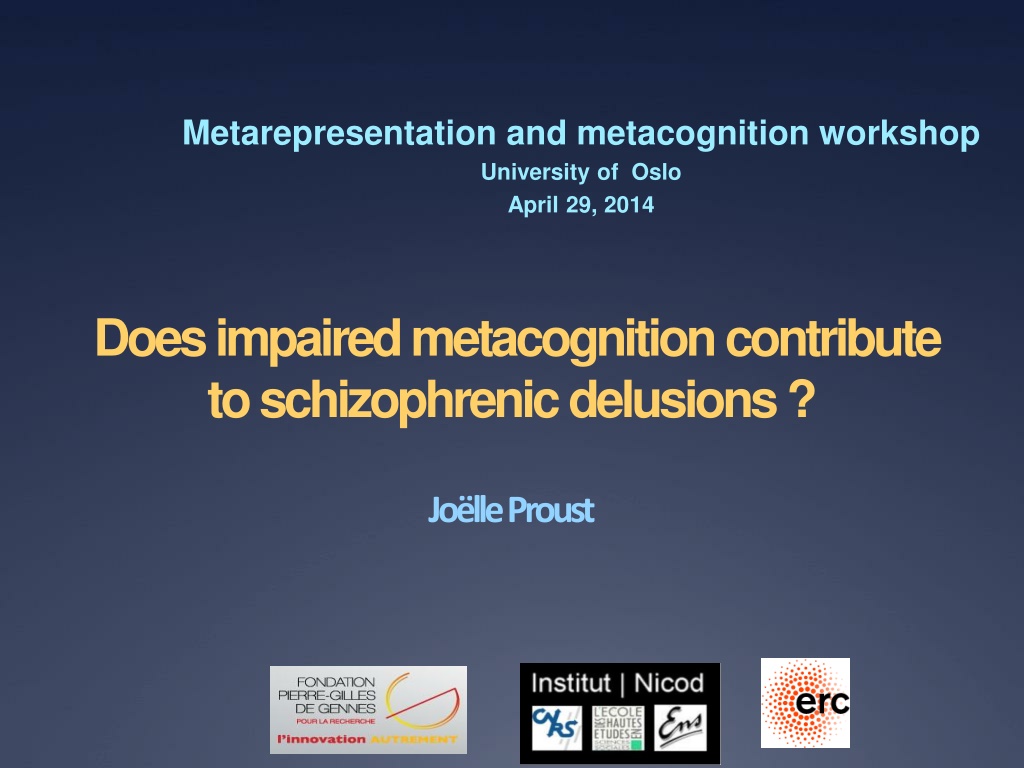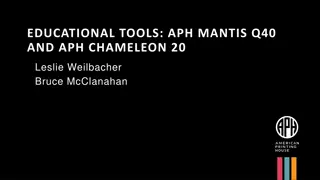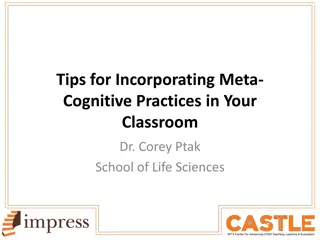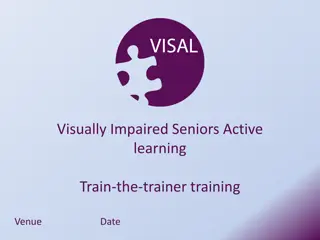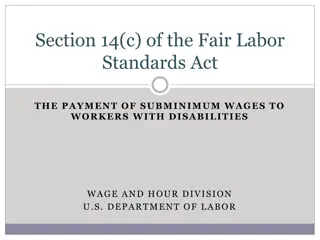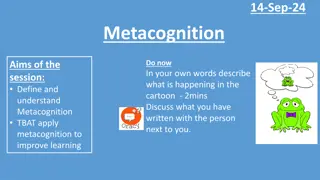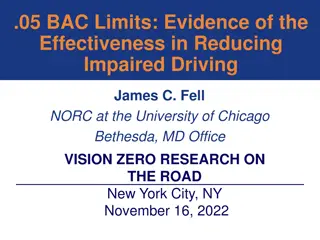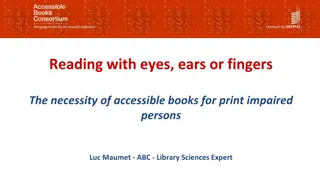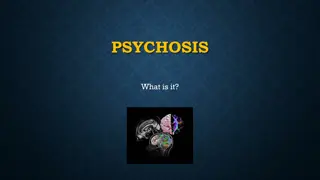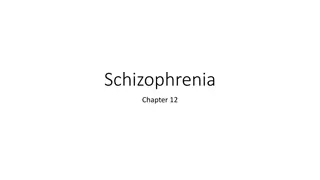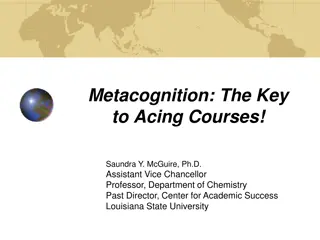Understanding Impaired Metacognition in Schizophrenic Delusions
Impaired metacognition may contribute to schizophrenia delusions, affecting how individuals perceive reality. Delusions are persistent irrational beliefs that can stem from various causes, including mental illness. Different types of delusions such as delusions of control and reference are observed in conditions like schizophrenia. Recognizing these delusions and their impact on metacognitive abilities is crucial for treatment and possible remediation strategies.
Download Presentation

Please find below an Image/Link to download the presentation.
The content on the website is provided AS IS for your information and personal use only. It may not be sold, licensed, or shared on other websites without obtaining consent from the author. Download presentation by click this link. If you encounter any issues during the download, it is possible that the publisher has removed the file from their server.
E N D
Presentation Transcript
Metarepresentation and metacognition workshop University of Oslo April 29, 2014 Does impaired metacognition contribute to schizophrenic delusions ? Jo lle Proust
Outline Introduction: Cases of delusions Impaired Metarepresentational ability (Frith 1992) 1. Impaired simulation (Daprati et al, 1997, Jeannerod and Pacherie, 2004) 2. Impaired metacognitive control and monitoring 3. Impaired metacognition 4. Conclusion: remediation?
Delusions A delusion is a belief held with strong conviction despite superior evidence to the contrary This definition is faulty for taking a delusion to be merely a belief; it may often consist in a global change in one s experience of the world The inflexibility of delusions distinguishes them from (truth sensitive) belief states. Alternative definition: a set of persistent bizarre or irrational beliefs that are not easily understood in terms of an individual s social or cultural background . Some delusions are not caused by a mental illness, but rather by high fever, poisoning, drugs, hemiplegia etc.
Cases of delusion Delusion of control of one s actions Fregoli delusion Erotomania Delusion of reference Cotard syndrom Thought insertion, thought withdrawal, thought broadcasting Grandiose & religious delusions Proprioceptive delusion Persecutory delusion Capgras delusion
Cases of delusion Delusion of control of one s actions Fregoli delusion Erotomania Thought insertion, thought withdrawal, thought broadcasting Cotard syndrom Grandiose & religious delusions Persecutory delusion Proprioceptive delusion Delusion of reference Capgras delusion
Delusions of control Some patients with schizophrenia, as well as brain- lesioned patients with alien hand syndrome, present a dissociation between the feeling that their own body is moving an experience of ownership related to the fact that something is happening to the self, the feeling that their body is being moved by a foreign intention, rather than of the subject s own will a perturbed feeling of agency.
4 intriguing features Asymmetry between SO and SA: no case of an impression of agency without an impression of ownership, no symmetrical delusion. Comparable xenopathy in delusion of control and thought insertion. External attribution versus feeling of non-agency Ocasionality problem: why is agency impaired in certain cases not others?
Hypothesis 1: metarepresentation A) The generation of intentions to act is massively impaired in patients: poverty of will, lack of persistence in their work, poor personal hygiene, difficulties communicating with others. B) Intention control and monitoring is also often impaired: patients have difficulties selecting an appropriate action- schema C) Finally, patients with schizophrenia monitor their actions in an abnormal way. They are able to correct failed actions only if they have access to visual feedback, in contrast to normal subjects, who also rely on internal forms of monitoring.
The control of action: Shallice (1988) Two functional levels the contention scheduling system (CSS) activates effectors on the basis of environmental affordances and triggers routine actions. It is regulated by mutual inhibition ("winner takes all"). the Supervisory Attentional System (SAS) is able to trigger non-routine actions, or actions that do not involve stimuli presently perceived.
The MR dimension The main feature of SAS that allows it to both provide an agent with conscious access to her actions and to control routine actions is a metarepresentational capacity. Frith (1992): If metarepresentation is malfunctioning, there will be an imbalance between higher-level conscious processes and lower-level unconscious processes. As a result, patients will be aware only of the contents of propositions, not of the metarepresentations in which they are embedded.
Frith 1992 Having had metarepresentations in the past, they are still able to attempt to form them. But they end up grasping only the embedded content: When trying to form the thought that someone thinks about P, they might only think P Instead of considering some form of action/thought, they will mistake the representation of a possible action/thought for a command to act/think
Objection: overgeneralization Patients don t have trouble reporting their own mental states: they are hyperreflexive (Sass et al. 2001) They are not impaired in reading minds in contexts not involving action of the self. Does not explain attribution of own actions to others.
The motor control hypothesis: A faulty or irregular efference copy? When acting, a forward model of the action is activated by the command. A comparator cuts down the amount of feedback required to check whether the action is successful, and makes control of action in normal subjects smooth and quick. In schizophrenia, the comparator might be faulty, thus depriving the agent both of the capacity to anticipate the observed feedback and to consciously take responsibility for her actions and thoughts (Feinberg (1978).
Forward model Predicted Sensory Feedback (Corollary Discharge) Predictor Efference Copy Sensory discrepancy Sensorimotor System Motor Command Actual Sensory Feedback Sensation
The motor control hypothesis: A faulty or irregular efference copy? Patient with delusion of control is aware of (i) her goal, (ii) her intention to move, (iii) her movement having occurred, But not of (iv) her having initiated her movement, because she failed to predict the sensory consequences of the movement.. Frith & Done,1989, Malenka et al., 1982; Mlakar, Jensterle,. & Frith, (1994), Wolpert et al., (1995); Blakemore, Rees, & Frith, (1998).
the motor control system makes use of internal models, including inverse and predictive models, and comparators. action-control mechanisms and action-awareness mechanisms are importantly connected. Matching feedback correlates with a sense of agency for the action. degree of mismatch between predicted and observed feedback modulates activation in the right inferior parietal lobule, and is responsible for external attributions of action.
the sense of extraneity result from a lack of sensory self-attenuation, itself caused by a failure to predict consequences of one s own actions. (Blakemore et al., 2000: self-tickling & auditory hallucinations) the sense of passivity results from the absence of self-attenuation
Question How does a mere difficulty in predicting the consequences of one s actions generates, on top of a perturbed sense of agency, an attribution to others of one s actions, even though the sense of ownership is not perturbed?
First attempt at addressing the problem: the simulation theory
Impaired simulation Simulation mechanisms are activated when observing as well as imagining and executing actions. Intentions to act are thus represented impersonally. Such impersonal intentions are labeled naked intentions. recognition of own/others agency depends on observed cues. Patients with schizophrenia have a general difficulty in simulating actions. Evidence from subjects with auditory hallucination suggests that they do not predict feedback from their own inner speech another form of covert, simulatory activity. (Daprati et al, 1997, Jeannerod & Pacherie, 2004)
Impaired simulation: a who system involved The motor system represents the actions of others to the same extent that it represents agent s own. The phenomenology of alien control might result from impairments to the mechanisms controlling and/or monitoring the different modes of simulation involved in the Who system. (Daprati et al, 1997, Jeannerod & Pacherie, 2004, Pacherie et al 2006)
Impaired simulation 2004 follow-up by Farrer et al. of Daprati et al.'s 1997 study shows that the level of activity in the patient s right posterior parietal cortex fails to be proportional to the discordance between expected and observed feedback, as it is in control subjects. A defective simulation mechanism, rather than a defective action monitoring mechanism, combined with a general disruption of the self-other distinction, could be responsible for an impaired sense of agency in patients with schizophrenia. (Daprati et al, 1997, Jeannerod & Pacherie, 2004, Farrer et al. 2004)
Objections If generally impaired simulation underlies the patients deficits, why do they seem to plan their actions normally? why do patients with alien control delusions believe that particular agents are controlling their actions? Is self-identity affected by impaired self-attribution of actions, and how so? how does the view explain that attribution of action and thought are both impaired? Occasionality problem unsolved delusion inflexibility not explained
Second attempt at addressing the problem: the revised control theory Fletcher & Frith (2009)
Common mechanism hypothesis Max Coltheart (2007) has argued that an account of delusions must include an account of impaired perception, and an account of abnormal belief. Against a two-deficit account, F & F (2009): Theory of coincidental damage unlikely Minimization of prediction error explains both the hallucinatory aspect (abnormal perception) and the delusional aspect of perturbed SA in schizophrenia.
Abnormal connectivity Sensory consequences of self-generated acts should normally elicit less brain activity than those of an externally generated act. This is not the case in Schizophrenia: there is a poor connectivity between motor and sensory regions (fMRI by Mechelli et al. 2007) Between rostral and caudal LPFC regions (Barbalat et al. 2011) pb in binding different temporal features of information into a temporary, unitary and coherent representation within the episodic buffer Fletcher & Frith (2009)
Koechlin Sommerfield 2007lin
Functional role of system hierarchy Prediction error emitted by a lower-level provides input for a higher-level system ( input not fully accounted for ) Feedback from the higher-level system is supposed to provide a readjustement to reduce the prediction error (new beliefs and inferences) Motivate discounting the present model Reallocate attention: a violation of expectation renders an occurrence more salient (Kapur 2003) Fletcher & Frith (2009)
System hierarchy impaired in schizophrenia Prediction errors emitted by the lower- level system are false, hence cannot be solved at a higher-level Propagate higher up: delusional belief that others control self, changed self-identity, etc.
System hierarchy impaired in schizophrenia Prediction errors emitted by the lower- level system are false, hence cannot be solved at a higher-level Propagate higher up: delusional belief that others control self, changed self-identity, etc.
What is the contribution of Impaired metacognition to schizophrenic delusions?
Where does metacognition step in? When a prediction error is occurring, it does not need to be monitored by metacognition (specialized in monitoring cognitive actions) Acting, however, normally elicits in humans, noetic feelings, i.e. predictions about what one can remember, discriminate, understand, in brief: all the information that can be exploited to achieve and further one s goals. It seems that these feelings, in patients, tend to express either inflated or no confidence at all
Impaired metacognition An impaired metacognition can result From inappropriate monitoring failing to have uncertainty feelings/ judgments matching the validity of the performance From inappropriate control failing to use monitoring to make congruent control decisions.
Impaired metacognition An impaired metacognition can result From inappropriate monitoring failing to have uncertainty feelings/ judgments matching the validity of the performance Garety From inappropriate control failing to use monitoring to make congruent control decisions Koren
Noetic feelings Have generally been ignored as a component in the hierarchical control systems Noetic feelings, however, are permanently monitoring the informational changes that our bodily actions generate as a side effect. You recognize a face or a place as familiar, you find a sign as strange, a landscape as beautiful, an activity as boring.
From prediction error to metacognition Phenomena such as enhancement of background sounds or sights that should be irrelevant can be explained by the prediction error being inappropriately quantified through inappropriate higher-level top-down modulation. Stimuli with large prediction errors will be felt as strange and externally generated Seen as demanding attention More readily associable Fletcher and Frith 2009
Role of prediction error in noetic feelings Enhanced sensory experiences are a source of noetic feelings, because they constitute in themselves epistemic affordances More salient more fluent More relevant more motivating for attention , thinking and planning More readily associable More informative Fletcher and Frith 2009, Proust 2014
A powerful source of motivation Clinical evidence suggests that patients are often very motivated by the metacognitive feelings elicited by their modified perceptions and by their potential new status as cognitive agents. Some of them even see themselves as about to build up far-reaching theories about the universe, or about society, etc. this positively rewarding feedback from noetic feelings might participate in fixing the delusion. (Pessiglione et al. 2006)
Dichotomous confidence & monitoring It is not the prediction errors per se that are faulty, but the way they are quantified : uncertainty about prediction error and about its significance are poorly estimated: Undue weight to small prediction error + underestimation of uncertainty = false inference A large prediction error may be rejected by being diluted in excessive noise Fletcher and Frith 2009
Why dichotomous confidence ratings ? There are two ways of understanding dichotomous confidence ratings: Either as reflecting an impairment in monitoring one s confidence Or in reflecting an impairment in control sensitivity
dichotomous confidence & monitoring Reasoning biases are generally understood from poor monitoring belief inflexibility: Delusional beliefs are felt by patients as self-evident jumping to conclusions = restricted data gathering: dichotomous confidence rating (all or nothing): extreme responses Garety et al. (2005),
dichotomous confidence: monitoring? Reasoning biases are generally understood from poor monitoring belief inflexibility: Delusional beliefs are felt by patients as self-evident = might also be a problem of failing to revise a belief jumping to conclusions = restricted data gathering is a problem of control not monitoring dichotomous confidence rating (all or nothing): extreme responses : also possibly a matter of control
Arguments in favor of a control problem Belief inflexibility: People able to report alternative explanations for their delusional beliefs are more likely to respond positively to the possibility of being mistaken (Freeman at al., 2004). Garety interprets as belonging to belief monitoring; reflecting on one s own beliefs, changing them in the light of reflection and evidence, generating and considering alternatives Garety et al. (2005)
In Garetys model, however, the crucial steps involve control /
Garety et al. 2005: reasoning processes in delusion conviction and change ER= extreme responding JTC= jumping to conclusions PM= possibility of being mistaken
Thinking style in delusions (Garety et al. 2005) Jumping to conclusions (on a probabilistic reasoning task) and more frequent endorsement of extreme responses independently conribute to belief inflexibility- misrecognition of possibility of being mistaken. The jumping to conclusions bias is thought to reflect a data-gathering bias, specifically, the rapid acceptance of a proposition in the absence of much information (Garety & Freeman, 1999). consistent with the hypothesis that patients make less use of past information when forming judgments and are overinfluenced by current stimuli at the expense of context or previous learning Hemsley, 1988; Kapur, 2003).
Dichotomous ratings and control An alternative explanation is that patients, due to an executive difficulty in associating a decision to a particular context, fail to correctly translate their feeling of confidence with the corresponding decision to respond, in particular when this response is offered verbally.
Impaired metacognitive control sensitivity 30 patients with first episode of schizophrenia. Asked to perform a Wisconsin task sorting task Then, asked to rate their level of confidence in the correctness of their performance Finally, asked to choose whether they want this trial to be counted toward their overall performance score on the test. Koren et al., 2006
Koren et al.,2004 Results: Insight into illness was correlated with correct confidence rating adequate control sensitivity. some patients, however, presented a dissociation between correct monitoring and inadequate control = failure in control sensitivity (correct subjective feedback, but not used in selecting action).
